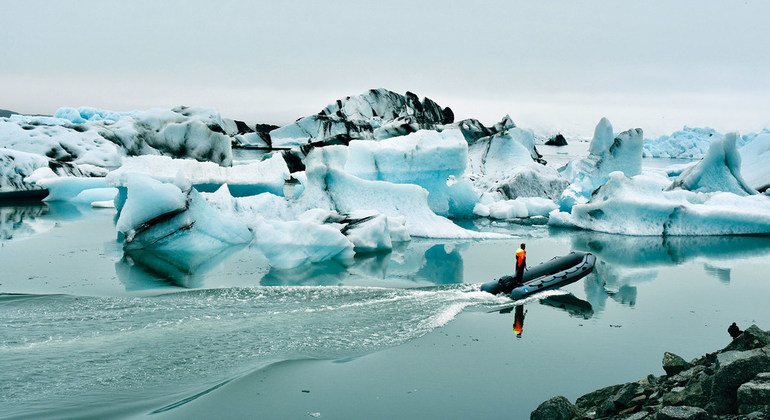Saving the planet step 1 – Keep the nuclear fleet operating as long as possible
On the cusp of the United Nations Climate Action Summit in New York where there was a collective outrage at the slow pace of decarbonization in the world, we lost another operating nuclear plant before its time as Three Mile Island Unit 1 closed after 45 years of operation. It made the news because of its more famous (or infamous) sister plant, TMI Unit 2 that had the USA’s worst nuclear accident 40 years ago. Of course, only the nuclear industry continues to talk about an accident that harmed no workers and had absolutely no impact on the public – other than fear. Certainly nothing to talk about after 40 years, and more so, should be a point of pride if this is the worst nuclear accident that ever happened in the US. But that discussion is for another day.
Today we want to focus on the importance of keeping the current nuclear fleet operating as long as possible. Once again, we go to the IEA report issued in May, “Nuclear Power in a clean energy system”. It notes the ”failure to expand low-carbon electricity generation is the single most important reason the world is falling short on key sustainable energy goals, including international climate targets.”
Probably the most important point made in this IEA report is about the absolute failure of renewables to make a dent in carbon emissions on their own. As stated, “Despite the impressive growth of solar and wind power, the overall share of clean energy sources in total electricity supply in 2018, at 36%, was the same as it was 20 years earlier because of the decline in nuclear. Halting that slide will be vital to stepping up the pace of the decarbonisation of electricity supply.” That’s right. Spending vast sums of money on renewables and closing another major source of low carbon electricity at the same time is a losing proposition. This is not progress, it is lunacy.

To put this in perspective, TMI Unit 1 that was closed last week produced 819 MW of electricity. For example, the Solar Energy Generating Systems (SEGS) in California, which is rated at 354 MW (or let’s say half of the TMI unit for simplicity) is one of the world’s largest solar thermal power plants with a total of 936,384 mirrors and covers more than 1,600 acres. Lined up, the parabolic mirrors would extend over 229 miles. With a solar capacity factor of about 20%, there would be a need for 10 of these gigantic solar farms to generate the same amount of electricity as the single TMI unit 1. And, as this electricity is not continuous, it requires gas to back it up when the sun is not shining. On the other hand, the TMI unit operated continuously for 709 days before its final shutdown on September 20. Now, no one is saying not to build solar farms, but having to build 10 massive ones to replace a single nuclear unit and not achieve a single ton of carbon reduction is an exercise in futility.
In the US, the challenge to keeping plants open is generally economic. Cheap gas in de-regulated markets is making it impossible to use any form of generation economically other than gas. On the other hand, gas is a significant carbon emitter and shutting down low carbon plants to burn more gas is not in line with environmental imperatives. So, what do governments do? They subsidize both solar and wind and balk at doing the same for nuclear. Back to TMI unit 1, its license was valid for another 15 years of operation and a subsidy of 1 cent a kWh would have kept it open, half of the subsidy provided to renewables. No one is suggesting that all plants should be kept open irrespective of its economics as there will always be cases that just don’t make sense, but on average, keeping plants open is way better for both system costs and the environment.
In fact, Staffan Qvist (co-author of the excellent book “A Bright Future”) presented a study at the WNA Annual Symposium in September for Sweden, which from a resource perspective is in a better position than most to achieve 100% renewables. Yet the results of his modelling about 20 different scenarios for full decarbonization always come out the same; in every scenario the most cost-effective system has continued long-term operation of existing nuclear. (We will have more to say on this topic in a future post.)
In the US it’s economics that are the driving force behind potential early closure. Much worse are the many other countries (with very successful nuclear programs) that want to close plants early simply on outdated antinuclear policies. From nuclear France closing Fessenheim when it is still operable for another decade to early closures in Belgium, Germany and host of other European countries; to South Korea’s new found dislike of nuclear power, shutdowns in Japan and early closures in Taiwan, the world is doing itself no favours in meeting its carbon targets.
However, change is in the air. Many states in the US have implemented policies to keep plants open. Sweden, Switzerland and France have delayed plans to close some plants and others like Belgium may soon realize they have no other viable options to meet their electricity needs unless they move in the same direction. In Korea the public is much more supportive of keeping nuclear power than its government and in Taiwan, a referendum that succeeded in demonstrating public support to keep nuclear is being ignored. And we all know that Germany is failing in its Energiewende as it delays coal closures to make up for shutting nuclear plants early. While it is acceptable to have a conversation about which technologies should be used in the future to best make progress on reducing carbon emissions, it is unfathomable to imagine why safe reliable low carbon plants would be closed before their time to make the already immense environmental challenge ahead even larger.
After all, the IEA report is clear. “Lifetime extensions of nuclear power plants are crucial to getting the energy transition back on track”. It concludes with a Policy recommendation to governments, ”authorise lifetime extensions of existing nuclear plants for as long as safely possible”.
Or as stated by Greta Thunberg in her comments to world leaders, “How dare you continue to look away and come here saying that you’re doing enough when the politics and solutions needed are still nowhere in sight”. Well hopefully world leaders listen and stop making decisions that only put them further behind when it is so urgent to move ahead.





1 Comment
mzconsultinginc.com | Saving the planet step 2 – let’s build as many Generation III nuclear plants as we can · November 30, 2019 at 8:25 pm
[…] their contribution to meeting the low carbon energy challenge. So, as we wrote before, if step 1 to saving the planet was to keep the current nuclear fleet operating as long as possible to avoid going backwards by […]
Comments are closed.